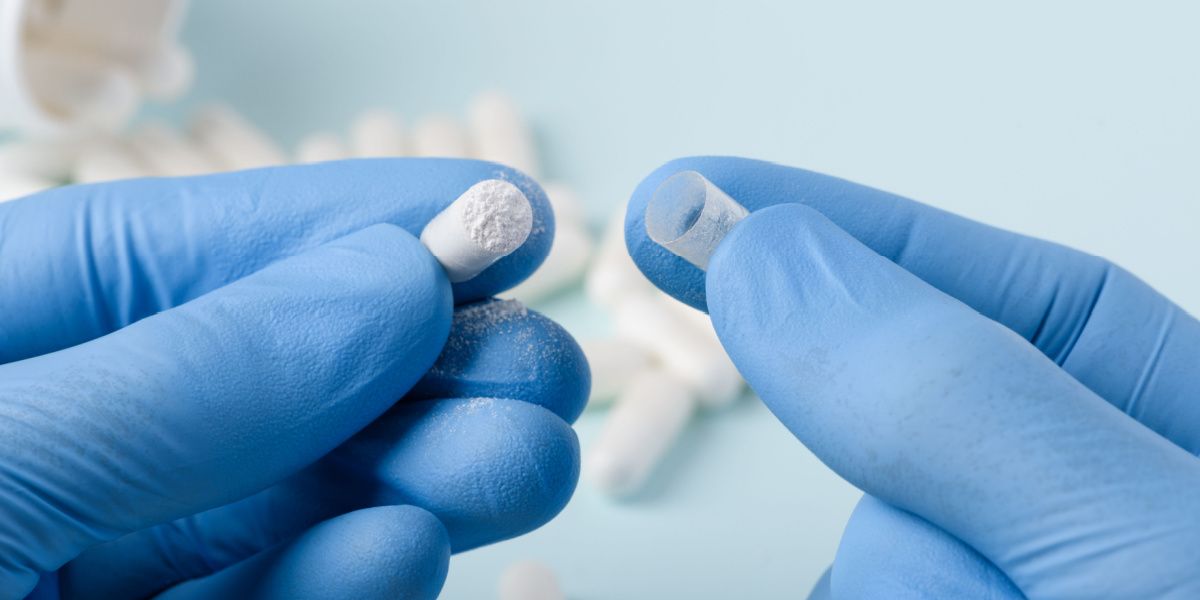Vicodin is a prescription painkiller tablet that is a combination of the synthetic opioid hydrocodone and acetaminophen (commonly found in paracetamol and Tylenol). Vicodin abuse can lead to physical dependence and addiction.
- A standard prescription usually indicates taking Vicodin once every six hours, though many start abusing the drug by taking it more frequently.
- As Vicodin also contains acetaminophen, there is an additional risk of liver damage, disease, and failure.
- Withdrawal from Vicodin usually sets in within 6-12 hours of the last dose, with the most severe and painful symptoms peaking at the 72-hour mark.

Understanding Vicodin
Vicodin is a composite prescription painkiller containing the synthetic opioid hydrocodone and acetaminophen. Other common names are Norco and Lortab.[4] The drug works by binding to mu-opioid receptors in the brain, which inhibits interaction with the central nervous system and reduces pain signals being sent to the brain. Vicodin is in the top 15 prescribed medications in the US and is typically used to treat moderate to severe pain, as well as chronic pain conditions.[5]
Vicodin comes in tablet form with three dose levels of hydrocodone: 5 mg, 7.5 mg, and 10 mg, and between 300 and 325 mg of acetaminophen (325 mg is the maximum dose allowance as outlined by the FDA). A standard prescription usually indicates taking Vicodin once every six hours, though many start abusing the drug by taking it more frequently.
In 2014, the DEA moved Vicodin from a Schedule III controlled substance to a Schedule II, owing to its high potential for abuse, as with other synthetic opioid-based pain medications. [3]
What is Vicodin used for?
Vicodin is prescribed to manage severe chronic pain and is often used as a long-term treatment. [1]
Effects of Vicodin misuse
All forms of hydrocodone and other opioid painkillers hold a high potential for abuse. As the medication directly affects the chemical balance of the brain, a tolerance can form even when taking the prescribed amount. This can lead to users requiring more of the drug for it to take effect, and in some cases, to feel normal levels of brain-chemical interaction. This is what is known as dependence or physical dependence, and if left unchecked, the negative consequences from dependence can lead to a diagnosable addiction.
When the substance is intentionally abused, especially in high doses, it can cause euphoric reactions and a sense of calm and relaxation. Vicodin can also cause adverse physical and psychological side effects, which can be hazardous to health and in some cases fatal.
The life-threatening results of Vicodin abuse often come from suffering an overdose, as the CNS depressant qualities of the drug can dramatically lower heart and breathing rates, which can lead to respiratory failure and coma. The risk of overdose is heightened when the substance is abused with other CNS depressants such as alcohol, benzodiazepines, and other opioids.
Physical effects of Vicodin misuse
- Drowsiness.
- Dizziness.
- Lightheadedness.
- Constipation.
- Depressed heart rate.
- Depressed breathing rate.
- Aches and cramps.
- Nausea/vomiting.
- Muscle pain.
Psychological effects of Vicodin misuse
- Depression.
- Anxiety.
- Dependence.
- Addiction.
As Vicodin also contains acetaminophen, there is an additional risk of liver damage, disease, and failure. This will normally occur when the abuser is taking other substances containing acetaminophen, such as Tylenol, as it takes doses of around 4,000 mg per day to incur serious liver damage.
Symptoms of Vicodin addiction
Over time, those who abuse Vicodin regularly will develop a tolerance to the substance, meaning they will require larger doses to feel the drug's effects, often more than they are prescribed.
This often leads them to use the medication more often or in higher doses than prescribed, and this can lead to a physical or psychological addiction to the drug.
Diagnosing Vicodin use disorder
Once an addiction develops, a person will often experience negative consequences or problems in one or more areas of life. These negative consequences, as outlined in the Diagnostic and Statistical Manual of Mental Disorders (DSM-5),[1] are the criteria by which addiction is measured and diagnosed.
Some of these criteria include:
- Hazardous use: You have used the substance in ways that are dangerous to yourself and/or others, i.e., overdosed, driven while under the influence, or blacked out.
- Social or interpersonal problems related to use: Substance use has caused relationship problems or conflicts with others.
- Neglected major roles to use: You have failed to meet your responsibilities at work, school, or home because of substance use.
- Withdrawal: When you stop using the substance, you experience withdrawal symptoms.
- Tolerance: You have built up a tolerance to the substance so that you have to use more to get the same effect.
- Used larger amounts/longer: You have started to use larger amounts or use the substance for longer amounts of time.
- Cravings and urges to use: You have strong cravings for the drug, which cause you to use it compulsively and make it harder to cut back, control, or stop.
Vicodin withdrawal
Vicodin withdrawal symptoms can be extremely uncomfortable. Hydrocodone is an extended-release painkiller, meaning the drug stays in the system longer and withdrawal symptoms are delayed (if abused in pill form; snorting Vicodin removes the time-release properties and will cause withdrawal to set in faster).
Withdrawal from Vicodin usually sets in within 6-12 hours of the last dose, with the most severe and painful symptoms peaking at the 72-hour mark. Acute withdrawal symptoms can last for up to two weeks, depending on the severity of the addiction and abuse. Post-acute withdrawal syndrome (PAWS) can last for up to 24 months and include a range of psychological ailments such as anxiety, depression, and insomnia.
Acute Vicodin withdrawal symptoms
- Anxiety and agitation.
- Diarrhea.
- Dilated pupils.
- Fever.
- Insomnia.
- General depression.
- Joint and muscle pain.
- Nausea and vomiting.
- Runny nose.
- Sweating.
- Watering eyes.
Vicodin addiction detox and treatment
There are both inpatient and outpatient programs available to help with Vicodin addiction. For those suffering from opioid withdrawal, detoxing in an inpatient or outpatient rehab facility with medication-assisted treatment (MAT) can help to reduce discomfort and support the early phases of recovery. Being in a safe, structured setting can also increase the likelihood of success by removing triggers for relapse.
Most people who complete a rehab program for opioid addiction will often need ongoing support to aid recovery, such as additional therapy, support groups, and 12-step programs. Long-term Vicodin addiction treatment can help to improve the likelihood of successful, lasting recovery. Many people also opt to take medications like suboxone, naltrexone, or Clonidine to help ease withdrawals and reduce cravings.
Final thoughts
If you or someone you know is suffering from a Vicodin addiction, contact a treatment center today to find out what help is available and begin the road to recovery. Often, the cost of inpatient or outpatient treatment will be at least partially covered by health insurance, and assistance programs are available for those who are self-paying.





